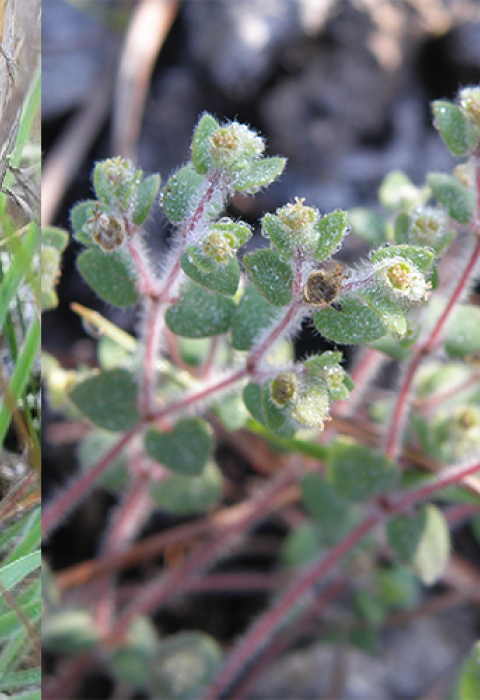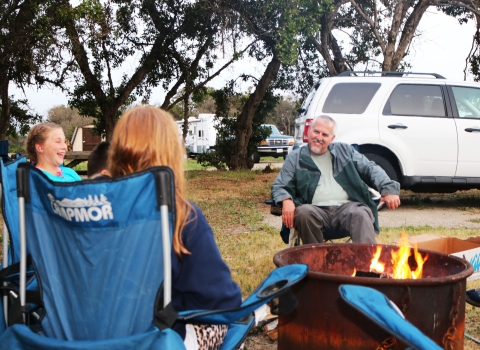The U.S. Fish and Wildlife Service is proposing to designate critical habitat for four imperiled plants that only grow in South Florida, specifically in Monroe, Collier, and Miami-Dade Counties. These four plants received federal protection under the Endangered Species Act on October 6, 2017.
Everglades bully, Florida pineland crabgrass, pineland sandmat, and Florida prairie-clover are disappearing from their historical locations. These plants have strongholds in Everglades National Park and Big Cypress National Preserve, with smaller areas of occurrence in Miami-Dade County on private and county land. Ongoing habitat loss, fragmentation, and degradation resulting from urban and agricultural development are eliminating the natural communities that sustain these plants. Additional threats to these species are lack of adequate fire management, sea level rise, maintenance practices used on disturbed sites, and competition with nonnative species.
“Critical habitat helps focus conservation where it is needed most. The proposal would extend Endangered Species Act protection to the habitats that are essential for the survival and recovery of these four Florida Everglades plants,” said the Service’s Southeast Regional Director, Leopoldo Miranda-Castro.
Establishing critical habitat will raise awareness of the needs of these plants and focus the efforts of our conservation partners. It also alerts federal agencies that they are required to make special conservation efforts when they work, fund, or permit activities in those areas. The designation will have no impact on private landowners taking actions on their land that do not require federal funding or permits. For this proposed critical habitat designation, at least 86% of the proposed critical habitat for each species occurs on federal lands.
The final listing rule for the Florida Everglades plants was published in the Federal Register on October 6, 2017. Florida pineland crabgrass, pineland sandmat and Everglades bully are listed as threatened, and Florida prairie-clover is listed as endangered. Designating critical habitat was considered prudent at the time of listing but not determinable because mapping and economic information was insufficient to perform the required analysis of the impacts of the designation. The Service is now moving forward with proposing critical habitat as required by the Endangered Species Act. A draft economic analysis that estimates the cost of designating critical habitat for the 4 Florida Everglades plants is also being made available with this proposed critical habitat designation. The areas being proposed overlap in large part with designated critical habitat for Bartram’s scrub-hairstreak and Florida leafwing butterflies. Proposed critical habitat for the Everglades bully, pineland sandmat, and Florida prairie-clover also overlap with designated critical habitat for Florida brickell-bush and Carter’s small-flowered flax.
For more information on the proposed critical habitat for these plants, please visit our FAQs.
This proposed rule will publish in the Federal Register on October 14, 2022. We encourage the public, academia, federal and state agencies, industry and other stakeholders to review the proposal and provide comments. The Service will accept comments regarding the proposed critical habitat or draft economic analysis that are received or postmarked on or before December 13, 2022. The agency must receive requests for public hearings, in writing by November 28, 2022.
The mission of the U.S. Fish and Wildlife Service is working with others to conserve, protect, and enhance fish, wildlife, plants, and their habitats for the continuing benefit of the American people. For more information on our work and the people who make it happen, visit www.fws.gov. Connect with our Facebook page at www.facebook.com/usfwssoutheast, follow our tweets at www.twitter.com/usfwssoutheast, watch our YouTube Channel at http://www.youtube.com/usfwsand download photos from our Flickr page at http://www.flickr.com/photos/usfwssoutheast.



